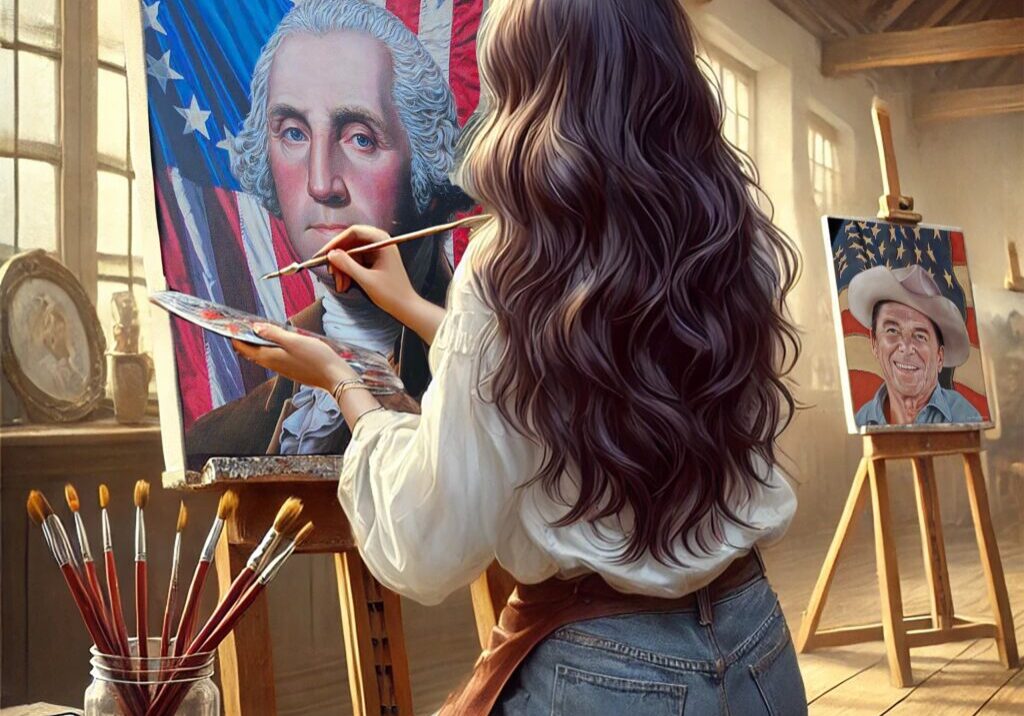
Eyes That Speak: Emotional Realism in Revolutionary Portraits
Look closely. Before the brush defines the lips or the folds of a sleeve, it goes to the eyes. In the portraits of the Revolutionary period, the eyes carry what words do not. They hold burden and belief, uncertainty and resolve. As I painted the mural, I spent countless hours studying these glances. Not every figure in the mural has a name, but each one has a gaze. That was essential. Because in the age of revolution, the most powerful conversations happened in silence. John Trumbull understood this when he painted the Declaration of Independence. The composition is full of iconic gestures, but it is the eyes that anchor the scene. Some turn toward the viewer, asking us to join the moment. Others look across the room at fellow signers, connecting without speaking. In Washington portraits by Gilbert Stuart, the gaze often drifts slightly to the side. It suggests thought in motion, a mind at work. That sideways glance holds dignity. It invites reflection rather than spectacle. In my own work, the eyes are the first thing I sketch. I begin with a loose oval or gesture line, but the face does not come alive until the gaze settles into place. For the mural, this was especially important. There is no time for dialogue bubbles or lengthy plaques. The eyes must carry the weight. They must say, I was here. I saw. I mattered. What fascinates me about Revolutionary portraiture is the emotional restraint. There is no open weeping or theatrical surprise. Instead, emotion gathers behind the eyes. In the portrait of Mercy Otis Warren, her gaze meets the viewer with quiet resolve. In Charles Willson Peale’s painting of his brother James, the eyes are calm but alert. They feel the moment but do not announce it. That subtlety is what makes the portraits lasting. They ask for contemplation. This tradition also offered a challenge when creating faces for lesser-known or anonymous figures in the mural. Without written records or famous features, I had to build expression from intention. What did this person believe? What were they witnessing? What tension lived beneath the brow? Often, the answer came not from imagining what they felt, but from remembering what they carried. That memory lives behind the eyes. Technically, painting eyes requires softness at the edges and structure at the core. The highlight must be placed just so. Too much shine makes the face appear startled. Too little creates dullness. I layered my glazes slowly. I let the pigment settle, then returned with subtle strokes to shape the pupil, the lid, the faint shadow below. These small decisions can shift a character’s entire story. In Revolutionary portraiture, even children are painted with mature eyes. Their expressions are solemn. They watch the adults. They hold history in miniature. That weight finds its way into my mural through young faces that do not play. They observe. They witness. The Revolution was not abstract to them. It was lived, and their portraits remember that truth. The emotional realism of the eyes is not about tears. It is about attention. Artists of the period knew that freedom was not only a cause. It was a feeling, a fear, a hope. All of that rests in the eyes. As I painted, I followed their lead. I let the eyes speak first. The rest of the face followed. Because sometimes the loudest voice on the wall is the one that simply looks back.

